Daruma dolls are one of the most recognizable traditional items in Japan. With their bold red color, round shape, and determined expression, they have become a universal symbol of perseverance, resilience, and goal achievement. While many travelers recognize daruma dolls as charming souvenirs, their cultural depth goes far beyond simple decoration. In Japan, daruma dolls are deeply tied to folk beliefs, Buddhist traditions, annual rituals, and modern goal-setting practices that continue to influence both personal and professional life today.
This guide offers a clear and comprehensive introduction to the world of daruma—explaining their origins, meanings, symbolism, colors, rituals, and modern uses. Whether you are interested in Japanese culture, collecting traditional crafts, motivating yourself toward a goal, or simply enjoying unique interior items, this guide will help you understand why daruma dolls have remained beloved for centuries.
1. What Is a Daruma Doll?
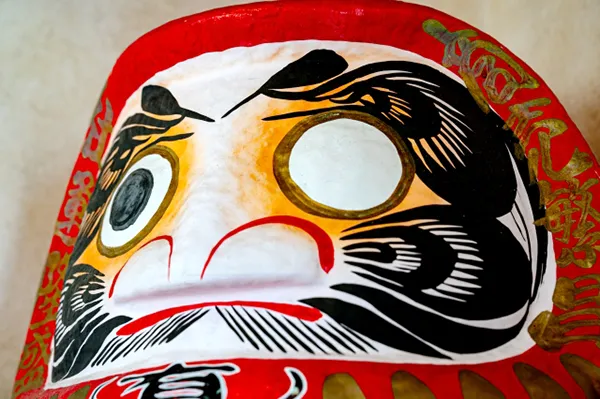
A daruma doll is a hollow, round, and usually red figure modeled after Bodhidharma, the founder of Zen Buddhism. Most daruma dolls have a weighted bottom, which allows them to return to an upright position even when tipped over. This design is meant to embody the Japanese proverb:
“Fall down seven times, stand up eight.”
This unshakeable resilience is the core meaning of the daruma doll. It reminds people to keep moving forward even when facing challenges, uncertainty, or hardship.
Daruma dolls normally have large white eyes with no pupils. Owners fill in one eye when they set a goal and the other eye when that goal is accomplished. This makes the daruma not just a decoration, but a practical tool for motivation and self-discipline.
2. The Origins: Bodhidharma and Zen Buddhism
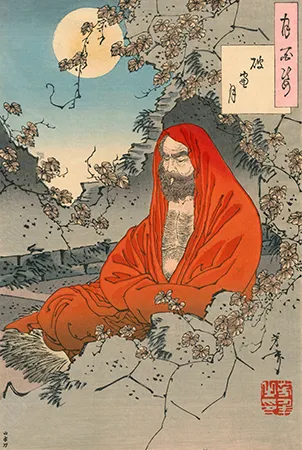
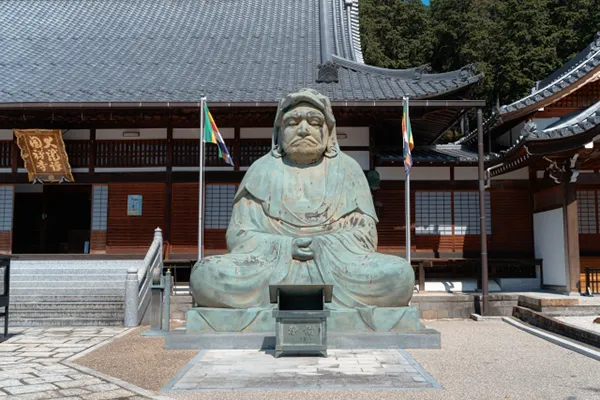
The historical inspiration for the daruma is Bodhidharma, a Buddhist monk from India or Central Asia who traveled to China around the 5th or 6th century. He is believed to have introduced the teachings that later became Zen Buddhism.
According to legend, Bodhidharma meditated facing a wall for nine years. His strict discipline became the foundation for the daruma’s symbolic meaning. Several famous tales contribute to the doll’s unique appearance:
- No arms or legs:
Some legends say his limbs “wasted away” from years of sitting still. This story evolved into the daruma’s round, limb-less shape. - Wide-open eyes:
Another legend claims Bodhidharma cut off his eyelids to prevent himself from falling asleep. This dramatic image led to the daruma’s big, unblinking eyes.
While these stories may not be literal, they emphasize the value of mental strength, determination, and dedication—qualities still associated with daruma dolls today.
3. How Daruma Became a Japanese Cultural Icon
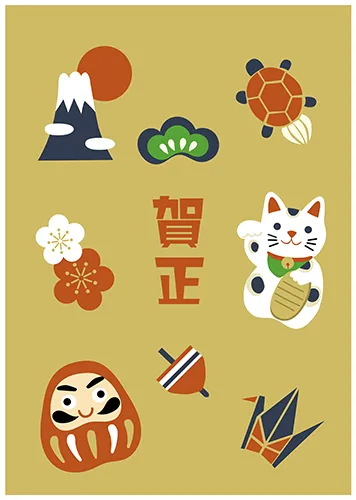
Daruma dolls emerged in Japan during the Edo period (1603–1868). The region most famous for their development is Takasaki in Gunma Prefecture, which remains the largest producer of daruma dolls in Japan today.
Local farmers originally created daruma dolls as talismans for good harvests and protection from illness. Over time, artisans refined the appearance, turning the dolls into vibrant red figures with detailed faces and symbolic decorations. By the 19th century, daruma had become common household items used for setting goals, praying for prosperity, and celebrating the New Year.
Today, daruma dolls remain an essential part of Japanese culture, used in schools, businesses, homes, temples, and even political campaigns.
4. The Symbolism Hidden in a Daruma Doll

Although the daruma may look simple at first glance, nearly every element carries symbolic meaning.
The Round Shape
The round, weighted shape represents persistence. No matter how many times the doll is knocked over, it stands back up.
The Eyes
Daruma dolls begin with blank white eyes. The owner fills in the first eye while making a wish or setting a goal. The second eye is completed only after the goal has been achieved. This tradition turns the daruma into a constant visual reminder of determination.
Facial Hair
The eyebrows often resemble cranes, while the beard and mustache resemble turtles. In Japanese symbolism, both animals represent long life and good fortune.
The Color Red
Historically, red was believed to protect against disease and misfortune. Today it is still associated with success, strength, and good luck.
Written Characters
Many daruma dolls have kanji characters on the front, such as:
- 福 (fuku) — good fortune
- 開運 (kaiun) — opening the path to luck
- 必勝 (hisshō) — certain victory
- 合格 (gōkaku) — passing exams
These inscriptions add personalized meaning depending on the owner’s intention.
5. Daruma Colors and Their Meanings
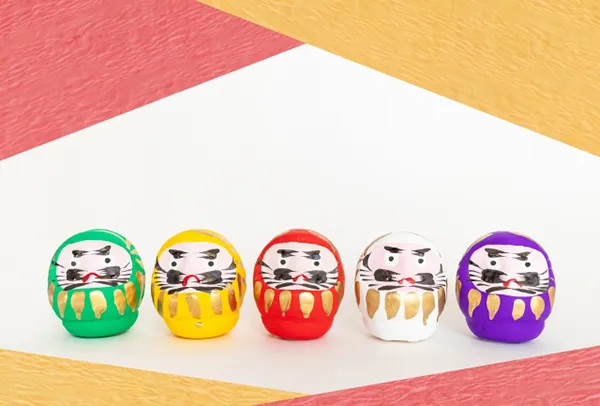
While red is the traditional color, modern daruma dolls come in many variations, each associated with a specific type of wish:
- Red: General good luck and success
- Gold: Wealth, prosperity, business growth
- Black: Protection against misfortune
- White: Academic achievement, clarity
- Blue: Career advancement and skills
- Green: Health, recovery, and wellness
- Pink: Love, relationships, emotional harmony
- Purple: Respect, dignity, and wisdom
- Rainbow: Inclusivity, diversity, and hope
These color variations make daruma dolls meaningful gifts for many different situations.
6. Regional Styles of Daruma

Different parts of Japan produce their own distinctive daruma dolls:
- Takasaki Daruma (Gunma): The most famous, with bold features and bright red bodies.
- Miharu Daruma (Fukushima): Softer expressions and bright colors.
- Shirakawa Daruma (Fukushima): Taller, more elegant shapes.
- Matsukawa Daruma (Nagano): Sharp, detailed brushwork.
- Okiagari-Koboshi (Fukui): Small “self-righting monks” closely related to daruma symbolism.
Each region reflects local artistic traditions, giving collectors plenty of variety.
7. How Daruma Are Used in Modern Japan


Daruma dolls remain part of everyday life in contemporary Japan.
In Business
Companies often use daruma dolls to set major goals, such as annual sales or successful product launches.
In Politics
Election candidates nearly always have a large daruma at their headquarters. They fill in the second eye only if they win.
In School and Exams
Students use white or red daruma dolls to pray for success in entrance exams or professional certifications.
In Sports
Teams and athletes use daruma dolls to focus on victory and avoid injuries.
In Daily Life
Many people keep daruma dolls as motivational items, reminders of personal aspirations, or decorative elements in the home.
8. Yearly Rituals and Daruma Burning Ceremonies
At the end of each year or after a goal has been accomplished, daruma dolls are traditionally returned to temples for a burning ceremony called daruma kuyō. This ritual expresses gratitude for the doll’s support and symbolically releases its spiritual energy.
Every January, the Takasaki Daruma Market attracts tens of thousands of visitors who buy new daruma dolls for the year and return their old ones to be burned respectfully.
9. How to Use a Daruma Doll for Goal Setting
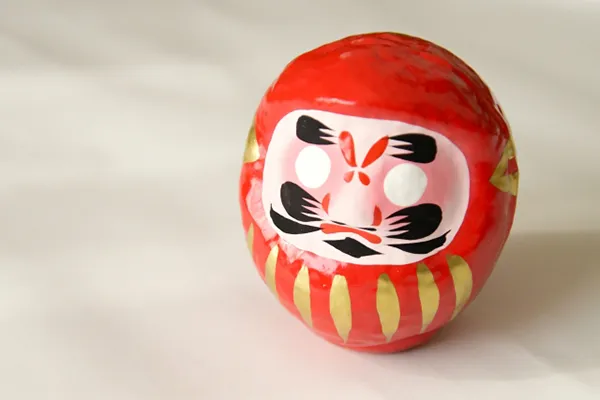
Here is the standard method for using a daruma:
- Choose a daruma with blank eyes.
- Make a clear goal or wish.
- Paint in one eye while declaring your intention.
- Place the daruma somewhere visible, such as your desk or living room.
- Work toward your goal.
- Paint in the second eye when you achieve it.
- Return the daruma to a temple at year’s end, if possible.
This process helps create accountability and symbolizes commitment.
10. Where to Buy Daruma Dolls
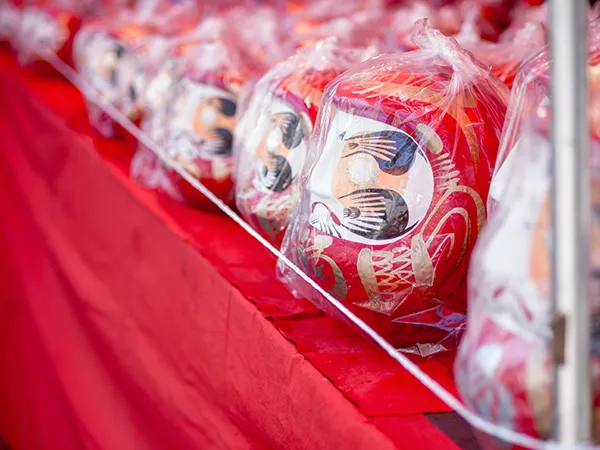
Daruma dolls can be purchased at:
- traditional craft shops
- temple markets
- New Year’s festivals
- souvenir shops
- online Japanese goods stores
For authenticity, Takasaki-made daruma are considered the highest quality.
Conclusion
Daruma dolls represent more than just Japanese tradition—they embody the universal human desire to persevere, overcome challenges, and work toward meaningful goals. If you walk through any shopping street in Japan, you’re almost guaranteed to spot a Daruma somewhere.
That’s how deeply this traditional figure is woven into everyday Japanese life.
In recent years, more and more Daruma with cute, modern designs have appeared as well.
Since they’re also sold as popular souvenirs, it might be fun to find a Daruma you like and give it as a gift to your friends or family.
Thanks for reading.

